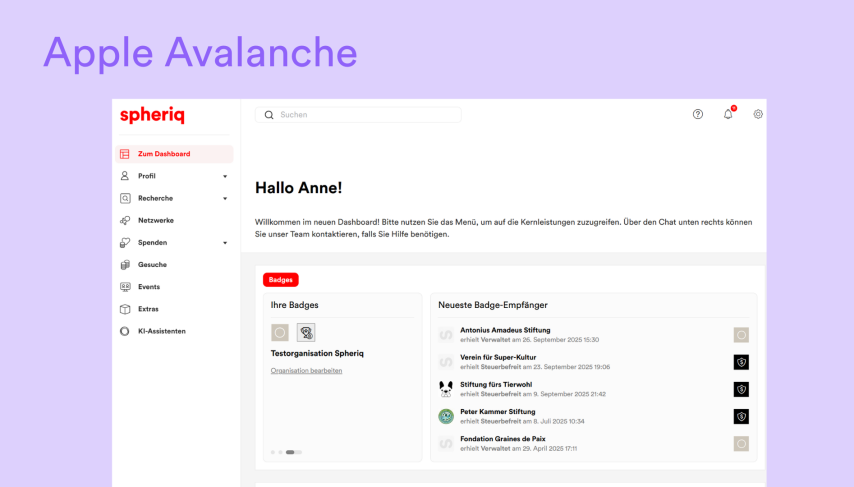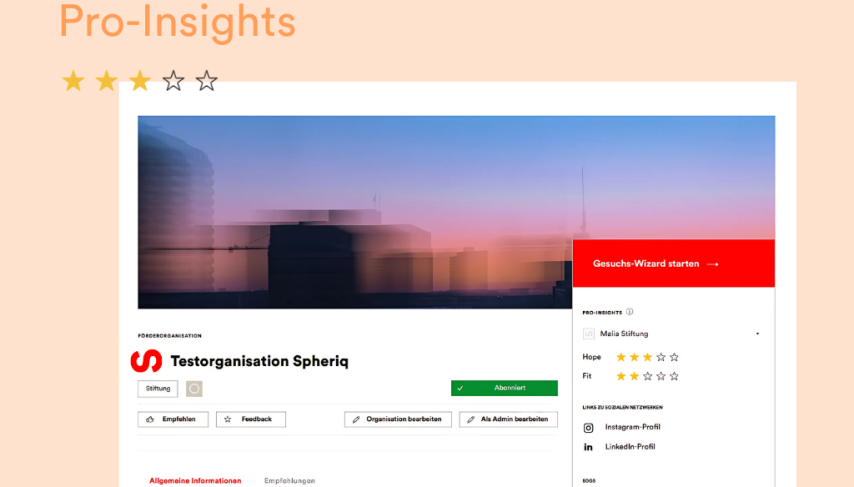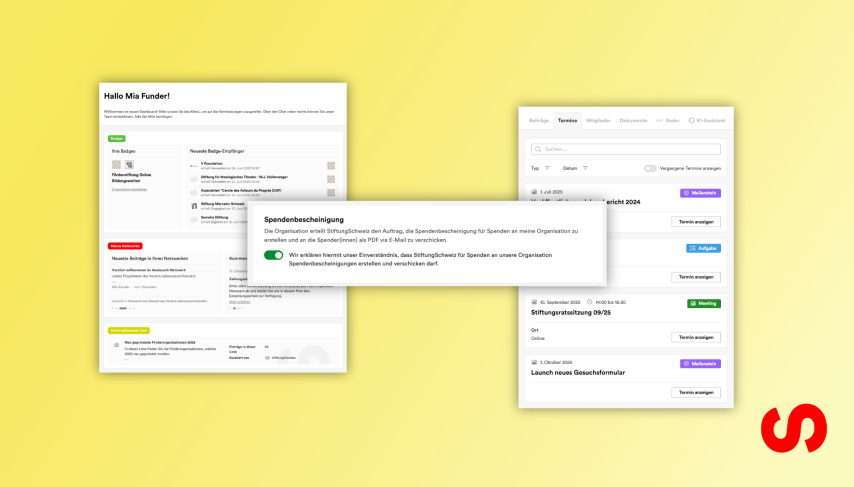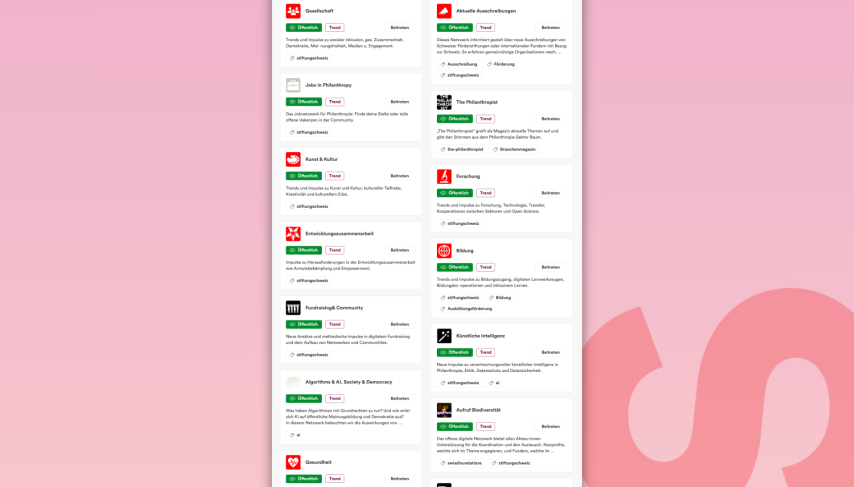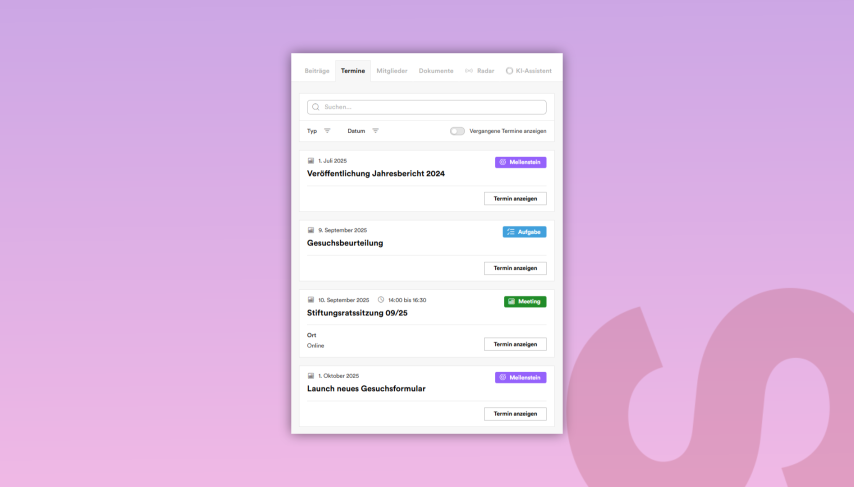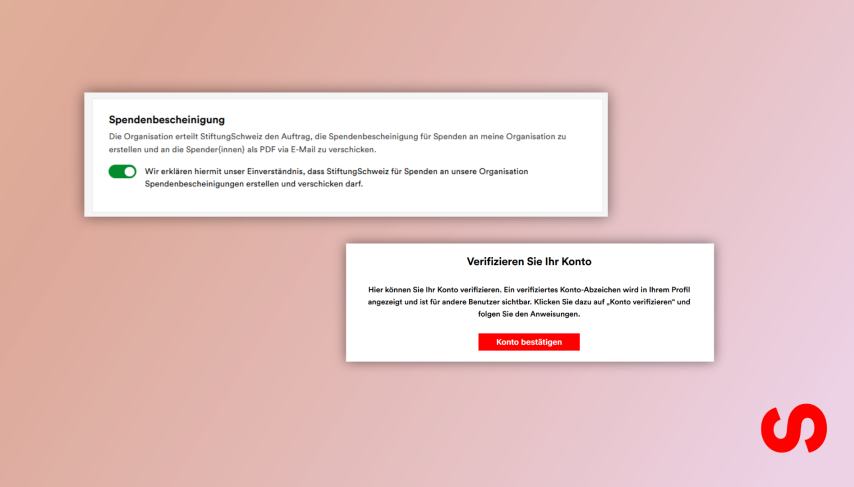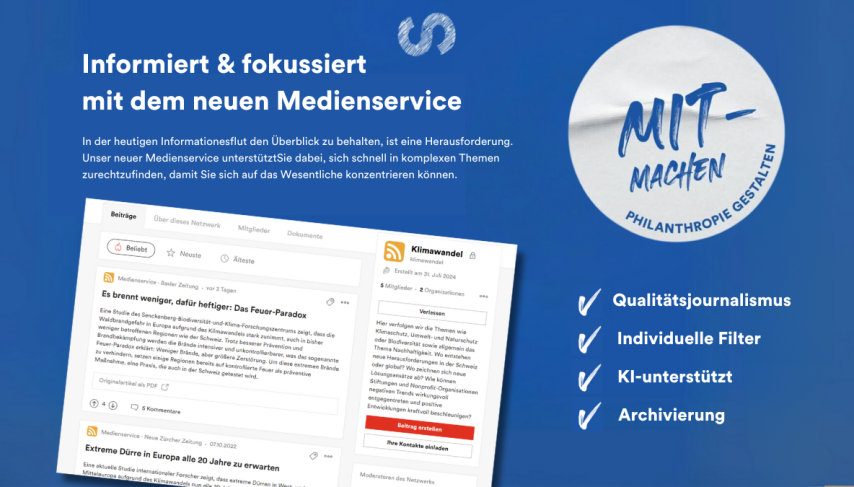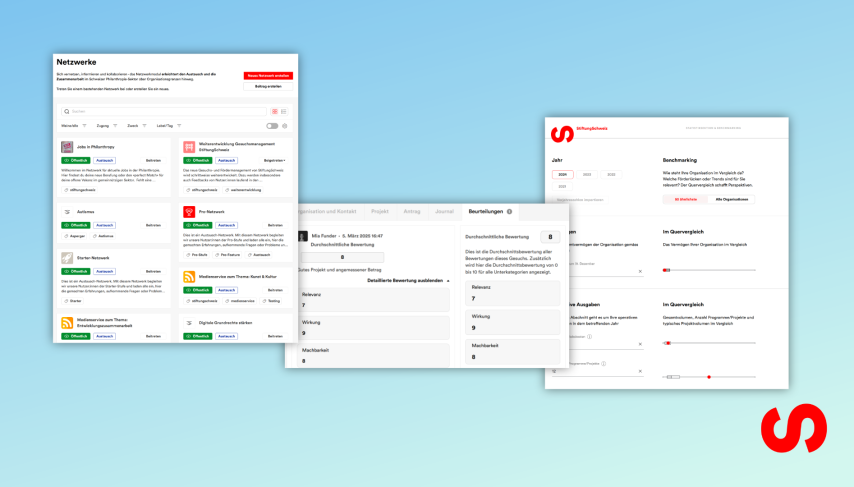StiftungSchweiz has completely revised, clarified and better structured the terms of use that have been in place since October 21, 2019. In this article, we inform you about the changes that will come into force on October 1, 2025.
With the new version of the terms of use, we are creating a more understandable, readable and clearer basis for using the platform. We start with the mission, target groups and purpose and structure the contract in a more logical sequence. The newly introduced distinction between the two content categories “platform content” and “user content” is central.
The new version is significantly shorter: instead of 20 articles, there are now 13 and the version is even a fifth shorter. And this is despite the fact that key elements have been added that come into play through additional applications. In short: with the new terms of use, we are creating reliable guidelines for the fair and secure operation of the platform.
In brief: The most important changes
In addition to the more readable structure and sequence, these are the most important changes to the content of the new version:
– The data policy is part of the user agreement: it is now explicitly part of the agreement and specifies our handling of data.
– In terms of content categories, we now distinguish between platform content and user content; this is associated with clear rules on visibility and use.
– Rights to user content now remain with the authors; StiftungSchweiz receives a simple, revocable, earmarked right of use for operation and anonymized/aggregated evaluations, limited to the membership; the right of use for platform content, on the other hand, remains unchanged.
– More precise regulation of data protection and clear delimitation of user responsibility: the terms of use now explicitly address data categories A-D and the responsibility for use outside the platform is regulated for exports.
– Specific applications are regulated separately: Donations, applications and networks are bundled with rights and obligations in a separate chapter.
– The credit system has been canceled: The never-used scheme has been dropped.
In the following chapters, we provide a detailed insight into the changes in the individual areas.
Scope of application
Previously, the scope and target group were less prominently bundled; guests were sometimes implicitly included. The validity for all domains/subdomains/apps is now clearly regulated; guests, registered and verified users are explicitly defined. In addition, there is a concise definition of the two content types platform content and user content.
Conclusion of contract
Until now, registration, consent and communication were regulated, but scattered across the 20 articles and partly formulated in technical terms. The basic principles are now more clearly and coherently regulated. Consent is given explicitly via click or use. With regard to changes to the terms of use, significant changes are now separated from editorial changes; a deadline now applies to the former.
Data and contents
Previously, there was no graduated treatment of different data categories. This has now been added, which creates transparency and clarity. Rules regarding creation, processing and visibility are more comprehensible and coherent. It is also stipulated that users are independently responsible for any use outside the platform in the case of exports.
Copyright and rights of use
Previously, the scope of rights of use to user content was generally broad and in some cases openly formulated. Now, all rights to user content remain with the authors and StiftungSchweiz only receives a narrow, revocable, purpose-limited right of use for operation or an anonymized aggregated evaluation, which is limited in time to the membership.
Access to the services
Previously, there was a notice period. Levels and terms are now regulated more transparently and automatic renewal can be interrupted by giving notice up to the last day of the term. Price changes are now communicated three months in advance and payment deadlines are regulated more precisely.
Obligations and rights of users
Previously, there were only general duties of care. The duties of care are now more detailed and therefore more clearly regulated with regard to accuracy, legal compliance or technical diligence, but also with regard to prohibited content and use.
Dealing with errors
Previously, notifications were possible, but the procedure was not fully described. Now, reporting, confirmation, review, comment, decision and restoration are clearly described, as is protection against improper reporting.
Specific information on individual applications
Previously, detailed rights and obligations were only described for the receipt of donations. Central principles are now also included for the submission of applications and networks, and the existing principles are formulated more simply and precisely. For example, the due diligence obligations of applicants are described in concrete terms, as is the clear responsibility of the funder for the review. The roles and responsibilities, the handling of copyright and usage limits in the networks are precisely defined.
Confidentiality
Previously, confidentiality was mentioned without protection levels. This aspect is now more important: the need-to-know principle has been introduced and increased protection measures have been introduced for sensitive data categories.
Liability
Previously, the main principles were in place. Now there is a much more precise liability framework that also regulates intent and gross negligence, but at the same time also excludes indirect damage and force majeure and specifies the warranties.
Final provisions
Previously, these standard clauses were spread across various articles. They are now more compact and more clearly formulated, but their content remains the same.





